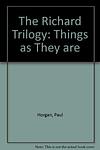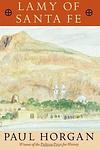Paul Horgan
Paul Horgan (1903–1995) was an American author, historian, and educator known for his contributions to the literature of the American Southwest. He wrote more than forty books, including novels, biographies, histories, and children's books. Horgan won two Pulitzer Prizes for History, one for 'Great River: The Rio Grande in North American History' and another for 'Lamy of Santa Fe'. His work is celebrated for its rich detail, narrative skill, and deep appreciation for the landscapes and peoples of the regions he wrote about.
Books
This list of books are ONLY the books that have been ranked on the lists that are aggregated on this site. This is not a comprehensive list of all books by this author.
-
1. The Richard Trilogy
"The Richard Trilogy" is a collection of three novels that follow the life of Richard, a young man from New Mexico, from his childhood to adulthood. The trilogy explores the themes of family, love, loss, and personal growth against the backdrop of the American Southwest. The protagonist navigates the challenges of growing up, the complexities of relationships, and the pursuit of his dreams, all while dealing with the societal and cultural changes of his time.
-
2. Great River: The Rio Grande in North American History
This book provides an in-depth historical account of the Rio Grande, one of North America's significant rivers. The narrative is divided into four parts, each representing a different era in the river's history. The author meticulously explores the indigenous cultures that first inhabited its banks, the Spanish conquest, the Mexican-American War, and the modern development of the river. The book is not just about the river itself, but also about the people, cultures, and events that have shaped its course and the region surrounding it.
-
3. Lamy of Santa Fe
"Lamy of Santa Fe" is a historical biography that tells the story of Jean-Baptiste Lamy, a French Catholic priest who became the first Archbishop of Santa Fe, New Mexico. The book explores his life and work, including his efforts to build the Cathedral Basilica of St. Francis of Assisi, his conflicts with local clergy, and his role in the cultural and religious evolution of the region. The narrative provides a comprehensive look at the history of the American Southwest during the 19th century.


